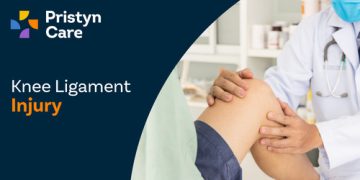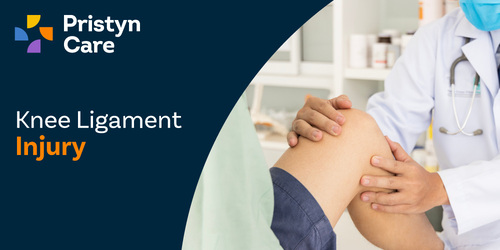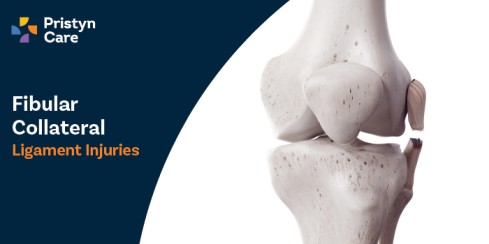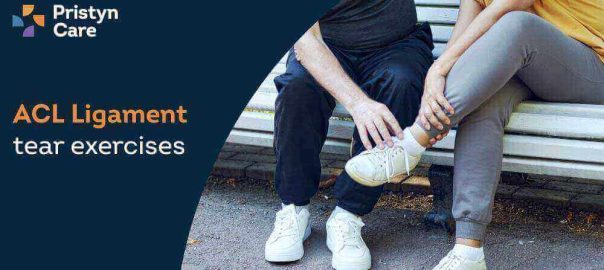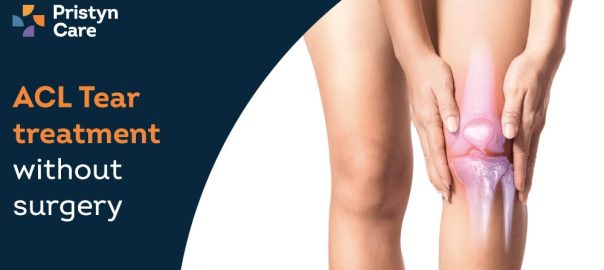![]() Views: 72
Views: 72
Knee Ligament Injury Recovery Period
Are you facing a long recovery after a knee ligament injury and wondering what the journey ahead looks like? Knee ligament injuries can be scary, affecting not just athletes but anyone in their daily activities. The path to recovery requires patience, adherence to medical advice, and a structured rehabilitation program.
Dedicated Support at Every Step!
Our Doctors are available 24 hours a day, 7 days a week to help you!
This blog will guide you through the typical knee ligament injury recovery period from initial injury to complete rehabilitation, providing essential tips to enhance your recovery process. Expect insights into the necessary steps for managing pain, reducing inflammation, and gradually regaining strength and mobility. We will equip you with the knowledge to navigate this challenging period effectively, ensuring a return to optimal knee function and overall well-being.
Table of Contents
Types of Knee Ligament Injuries
Knee ligament injuries are common yet complex issues that significantly impact mobility and quality of life. Understanding the different types of ligament injuries is crucial for effective diagnosis and treatment.
1. ACL (Anterior Cruciate Ligament)
The Anterior Cruciate Ligament (ACL) is one of the most critical ligaments in the knee, providing rotational stability and preventing the tibia from sliding out in front of the femur. ACL injuries are common in sports that require sudden stops and changes in direction.
- Mechanism of injury: Typically occurs during activities involving abrupt stops, quick changes in direction, or direct contact from the side.
- Symptoms: A loud "pop" sound, severe pain, immediate swelling, and instability when bearing weight.
- Diagnosis: Usually diagnosed through physical exams and imaging tests like MRI.
2. MCL (Medial Collateral Ligament)
The Medial Collateral Ligament (MCL) spans the side of the knee from the femur to the top of the tibia and resists widening of the inside of the joint. MCL injuries typically result from a force that pushes the knee sideways.
- Mechanism of injury: Commonly injured by a direct blow to the outside of the knee.
- Symptoms: Pain and tenderness along the inner part of the knee, swelling, and a feeling of instability when walking.
- Diagnosis: MCL tears are assessed through clinical examination and confirmed with MRI.
3. PCL (Posterior Cruciate Ligament)
The Posterior Cruciate Ligament (PCL) is located at the back of the knee. It prevents the tibia from moving backwards under the femur. Injuries to the PCL are less common but can occur in vehicle accidents or sports.
- Mechanism of injury: Often injured by a blow to the front of the knee while the leg is bent.
- Symptoms: Mild to moderate pain in the knee, slight swelling that increases over time, difficulty walking.
- Diagnosis: Diagnosis involves physical examinations, MRI scans, and sometimes arthroscopy.
4. LCL (Lateral Collateral Ligament)
The Lateral Collateral Ligament (LCL) runs along the outer side of the knee and stabilises the lateral movement of the knee joint. LCL injuries are rarer and usually occur from direct trauma.
- Mechanism of injury: Typically results from a force striking the inside of the knee, pushing the knee outward.
- Symptoms: Pain and tenderness on the outside of the knee, swelling, instability, especially when trying to twist or turn the knee.
- Diagnosis: LCL injuries are evaluated using clinical examinations supplemented by imaging techniques such as MRI.
No Cost EMI, Hassle-free Insurance Approval
Initial Recovery Phase (0-2 Weeks Post-Injury)
The initial stage of the knee ligament injury recovery period is pivotal as it sets the foundation for the entire rehabilitation process. Immediately following a knee ligament injury or surgery, specific measures must be implemented to ensure that recovery starts on the right path.
Immediate Care Post-Injury or Surgery
- Cold Therapy: Applying ice packs to the injured knee to reduce swelling and numb pain. This should be done for 15-20 minutes every hour.
- Compression: Use of an elastic bandage or a knee brace to provide support and reduce internal bleeding.
- Elevation: Keeping the injured knee elevated above the heart level to decrease swelling.
- Rest: Limiting movement to prevent further damage and facilitate the start of healing.
Use of Braces and Crutches
- Braces: Employing knee braces to immobilise the knee and prevent it from bearing weight.
- Crutches: Using crutches to avoid putting weight on the injured leg, thereby protecting the knee from stress and strain.
Pain Management and Inflammation Reduction
- Medications: Administering NSAIDs or pain relievers to control pain and reduce inflammation.
- Doctor Consultations: Regular check-ups to monitor the knee’s condition and modify treatment as needed.
Early Rehabilitation (2-6 Weeks)
During this phase, patients' transition from resting the knee to slowly regaining movement is vital to prevent stiffness and improve circulation.
Introduction to Physical Therapy
- Assessment: Initial evaluation by a physiotherapist to establish a tailored rehabilitation program.
- Education: Patients learn about knee mechanics and the importance of each exercise in their recovery.
Range of Motion Exercises
- Passive Movements: Performing gentle exercises without muscle contraction to slowly increase the knee's range of motion.
- Active Assistance: Gradually introducing active exercises where the patient uses their strength with some support.
Gradual Weight Bearing and Walking
- Partial Weight Bearing: Slowly increasing weight placed on the injured leg, depending on pain tolerance and stability.
- Assisted Walking: Starting to walk using aids like crutches or a walker, transitioning to unassisted walking as strength and confidence improve.
Strengthening and Conditioning (6 Weeks - 3 Months)
As the knee's condition improves, more dynamic and strength-focused exercises are introduced to restore muscle mass and joint stability.
Strengthening Exercises
- Isometric Exercises: Strengthening muscles without moving the knee, such as quad sets and glute bridges.
- Controlled Loading: Introducing light weights or resistance bands to enhance muscle strength and endurance.
Conditioning to Regain Muscle Mass
- Progressive Loading: Gradual increase in exercise intensity to rebuild muscle mass and improve muscular endurance.
- Functional Exercises: Incorporating exercises that mimic daily activities to improve functional strength.
Balance and Proprioception Training
- Balance Exercises: Performing drills that enhance the body’s ability to control the knee's position, critical for preventing re-injury.
- Proprioceptive Training: Advanced exercises that challenge the knee's ability to respond to various positions and loads.
Advanced Rehabilitation and Return to Activity (3-6 Months)
This phase focuses on preparing the patient to return to normal activities, including sports, by incorporating advanced and sport-specific exercises.
Sport-Specific Training
- Simulation Drills: Engaging in drills that replicate the specific demands of the patient's sport to prepare for safe re-entry.
- Technique Correction: Adjusting movement patterns to reduce stress on the knee and prevent future injuries.
Advanced Strengthening Techniques
- High-Intensity Training: Utilising higher resistance and complex movements to maximise strength and endurance.
- Plyometrics: Introducing explosive movements to improve power and agility.
Evaluating Readiness for Return to Sport
- Functional Testing: Conducting tests to measure readiness for sport, assessing stability, strength, and endurance.
- Decision Making: Collaborating with healthcare professionals to decide the right time to resume full sports activities.
Long-Term Recovery and Ongoing Care (6 Months and Beyond)
The long-term phase of the knee ligament injury recovery period ensures sustained health of the knee and prevention of future injuries.
Long-Term Physiotherapy Options
- Maintenance Therapy: Continuing with less frequent physiotherapy sessions to maintain knee health and functionality.
- Routine Assessments: Periodic evaluations to monitor the long-term health of the knee and adjust the care plan as needed.
Ongoing Strength and Conditioning
- Regular Exercise Routine: Maintaining a regular regimen of strength, flexibility, and aerobic exercises.
- Activity Recommendations: Advising on suitable activities that minimise the risk of knee re-injury.
Preventive Measures and Lifestyle Adjustments
- Educational Workshops: Offering workshops on injury prevention and knee care.
- Ergonomic and Lifestyle Advice: Providing recommendations on ergonomic adjustments and lifestyle changes to support knee health.
By adhering to this comprehensive recovery plan, patients can effectively manage the knee ligament injury recovery period, ensuring the best possible outcome in regaining full knee function and returning to their pre-injury lifestyle.
Tips for Effective Recovery
Achieving an optimal outcome during the knee ligament injury recovery period necessitates adherence to several key practices that support physical healing and overall well-being.
Importance of Following a Structured Rehabilitation Program
- Personalised Care: Every knee injury is unique, and thus, recovery protocols should be tailored to meet the specific needs and goals of the individual.
- Progress Monitoring: Regular assessments by healthcare professionals ensure that the recovery is on track and adjustments are made as necessary.
- Consistency: Adhering to the prescribed rehabilitation schedule without skipping sessions is crucial for effective healing.
Nutrition and Hydration
- Nutrient-Rich Diet: Consuming a balanced diet rich in vitamins and minerals supports tissue repair and overall health. Key nutrients include protein, Vitamin C, Omega-3 fatty acids, and calcium.
- Hydration: Keeping the body well-hydrated is essential for maintaining the health of cartilage and for overall cellular functions. It aids in nutrient transportation and waste product removal from the body.
- Anti-Inflammatory Foods: Incorporating anti-inflammatory foods like turmeric, ginger, berries, and leafy greens can help reduce swelling and pain during the recovery process.
Psychological Aspects of Recovery
- Mental Health: Recovery from a knee ligament injury can be mentally challenging. Feelings of frustration, boredom, or depression are common as mobility is often restricted.
- Support Systems: Engaging with therapists, joining support groups, or maintaining close connections with family and friends can provide emotional support.
- Goal Setting: Setting small, achievable goals can help maintain a sense of progress and motivation throughout the recovery process.
Common Setbacks and How to Handle Them
Recovery from a knee ligament injury isn't always smooth; understanding how to recognize and manage potential setbacks is crucial.
Signs of Potential Complications
- Increased Pain and Swelling: Any sudden increase in pain or swelling could indicate an aggravation of the injury or an infection.
- Reduced Mobility: A decrease in the knee's range of motion after initial improvement may suggest complications.
- Signs of Infection: Redness, warmth, or discharge from any surgical site warrants immediate medical attention.
Managing Setbacks During Recovery
- Consultation: At the first sign of a setback, consulting with a healthcare provider is critical. They can evaluate the symptoms and adjust the treatment plan accordingly.
- Modifying Activities: Reducing or altering exercise routines in response to pain or discomfort can prevent further injury.
- Rest and Recuperation: Sometimes, simply allowing the body time to heal is necessary, especially after experiencing a setback.
Winding Up
The knee ligament injury recovery period is a structured journey that requires meticulous attention to rehabilitation protocols, nutritional support, and psychological well-being. Each phase of recovery, from immediate post-injury care through long-term maintenance, is crucial in ensuring a successful return to normal activity and preventing future injuries.
Patients must remain proactive, adhering closely to their healthcare provider's advice and engaging actively in their prescribed rehabilitation exercises. Understanding the challenges and embracing the necessary lifestyle adjustments and supports can significantly enhance the effectiveness of the recovery process, leading to better outcomes and a faster return to daily activities.
FAQs
Q1. How can I tell if my knee ligament injury is severe?
Severe knee ligament injuries are typically accompanied by intense pain, significant swelling, a noticeable popping sound at the time of injury, and an inability to bear weight on the affected leg. Medical evaluation is essential for an accurate diagnosis.
Q2. What are the risks of returning to sports too soon after a knee ligament injury?
Returning to sports too soon increases the risk of re-injury and could lead to chronic knee instability or permanent damage. It's important to fully restore strength, flexibility, and stability before resuming sports activities.
Q3. Are there any long-term effects of knee ligament injuries?
Long-term effects of knee ligament injuries can include chronic pain, recurrent instability, increased risk of osteoarthritis, and limitations in knee function. Proper treatment and rehabilitation are key to minimising these potential outcomes.
Q4. Can physiotherapy completely heal a knee ligament injury?
Physiotherapy can significantly heal and restore function after a knee ligament injury, particularly with minor to moderate injuries. Complete recovery depends on the injury's severity, the specific ligament affected, and adherence to a personalised physiotherapy regimen.
Q5. How can I improve my balance after a knee ligament injury?
Improving balance after a knee ligament injury involves engaging in proprioceptive exercises, which might include standing on one leg, using balance boards, or performing yoga. These activities help retrain the nervous system to control the movements of the knee more effectively.



